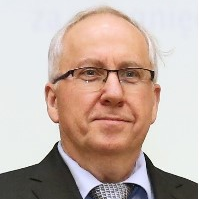State-of-the-Art Membrane Science and Technology in Poland 2021-2022
A special issue of Membranes (ISSN 2077-0375).
Deadline for manuscript submissions: closed (30 November 2022) | Viewed by 21426
Special Issue Editors
Interests: membrane distillation; microfiltration; ultrafiltration; nanofiltration; reverse osmosis; polymeric membranes; surface modification; water and wastewater treatment; separation applying membranes; membrane bioreactors; membrane crystallization; fouling and scaling
Special Issues, Collections and Topics in MDPI journals
Interests: ceramic membranes; polymeric membranes; surface modification; membrane modification; organic-inorganic hybrids; gas separation, membrane contactors, membrane distillation; pervaporation; ultrafiltration; nanofiltration; organic solvent nanofiltration; separation applying membranes
Special Issues, Collections and Topics in MDPI journals
Special Issue Information
Dear Colleagues,
Separation processes applied to purification of industrial streams and to water and wastewater treatment are the key factors in economic and sustainable world development. Membrane processes can replace traditional multiple-step technologies, increasing the efficiency and productivity of separation. Therefore, membrane processes are a fast-growing part of the separation technology.
In Poland, pressure-driven processes including reverse osmosis, nanofiltration and ultra- and microfiltration are already applied at an industrial scale for food and bioproduct processing. Moreover, a number of installations for wastewater treatment (membrane bioreactors) have been accomplished. Membrane technology is also used in the petrochemical and other industries. Academic scientists and industries in Poland have developed new types of membrane processes and demonstrated their application potential.
The present Special Issue is aimed at presenting the current state of the art and recent advances in membrane science and technology in Poland. It is our pleasure to invite you to submit review articles, original papers and communications for this Special Issue. Both experimental and theoretical contributions are welcome.
Topics of particular interest include (but are not limited to) the following:
- Development of new membrane materials and processes;
- New application area for membrane technology;
- Methods for mitigation of fouling and scaling;
- Development of membrane module and membrane installations;
- Modeling and simulations of membrane transport and membrane-based process operation;
- Membrane education.
Prof. Dr. Marek Gryta
Prof. Dr. Wojciech Kujawski
Guest Editors
Manuscript Submission Information
Manuscripts should be submitted online at www.mdpi.com by registering and logging in to this website. Once you are registered, click here to go to the submission form. Manuscripts can be submitted until the deadline. All submissions that pass pre-check are peer-reviewed. Accepted papers will be published continuously in the journal (as soon as accepted) and will be listed together on the special issue website. Research articles, review articles as well as short communications are invited. For planned papers, a title and short abstract (about 100 words) can be sent to the Editorial Office for announcement on this website.
Submitted manuscripts should not have been published previously, nor be under consideration for publication elsewhere (except conference proceedings papers). All manuscripts are thoroughly refereed through a single-blind peer-review process. A guide for authors and other relevant information for submission of manuscripts is available on the Instructions for Authors page. Membranes is an international peer-reviewed open access monthly journal published by MDPI.
Please visit the Instructions for Authors page before submitting a manuscript. The Article Processing Charge (APC) for publication in this open access journal is 2700 CHF (Swiss Francs). Submitted papers should be well formatted and use good English. Authors may use MDPI's English editing service prior to publication or during author revisions.







